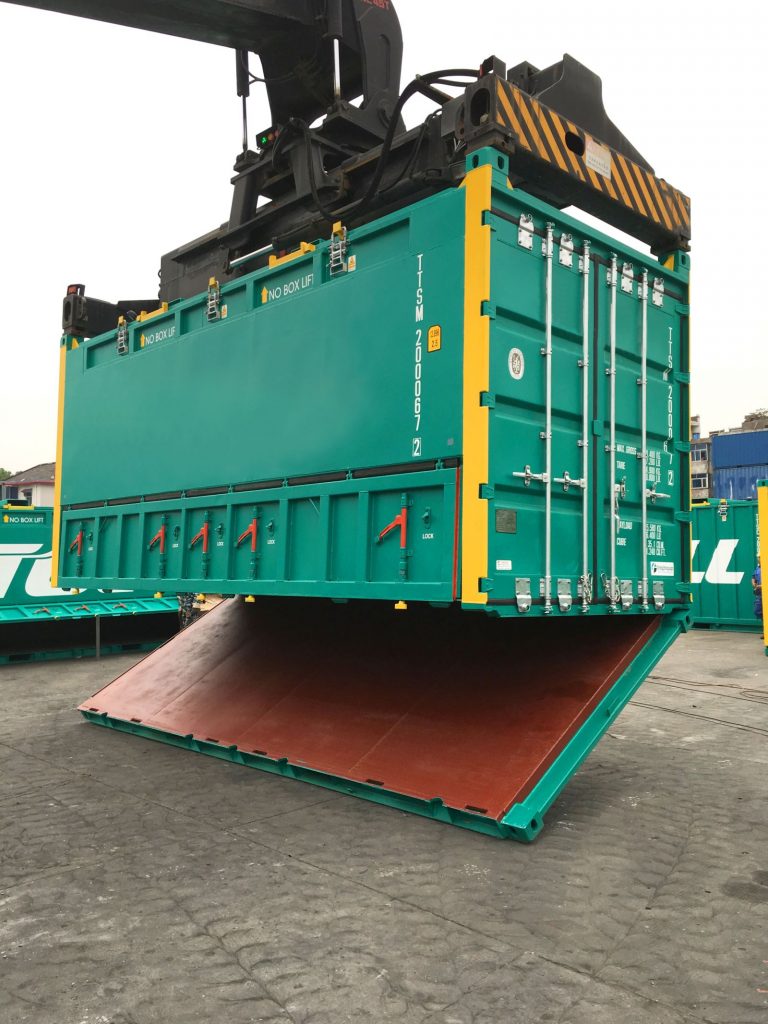Containerised cargo equipment is more or less standardised from a dimensional, compliance and certification point of view. When it comes to palletised vs non-palletised freight, often the two types do not cross-over well; non-palletised freight containers are often not suitable for palletised freight – and vice versa. That is where the Scrap Box – or Recycling Box – comes in.


Scrap Box Safety Benefits
Significant safety benefits are available – depending on the application – as there is no need for tipping to discharge the bulk cargo from the container.
Inertia of discharging cargo is often a big safety issue when the operator – in preparation for tipping – is opening conventional container doors. The pressure and inertia of discharging cargo often causes the container door to aggressively swing open. Usually the driver is in the vicinity as the door locking gear is of such type that it requires manual operation. When preparing the Scrap Box for discharge – by means of unlocking the floor – the operator is not exposed to any form of cargo discharge. Exclusion zones can easily be maintained when this container is being emptied.
Uneven ground surface in combination with a top-heavy tipping load often causes increased risk of tipping trailers falling over. This container not requiring to be tipped eliminates this risk all together.
Efficiency by design
This container concept was developed initially for the scrap metal logistics, rail and shipping industry, but is equally suited for timber, waste recycling, or other certain types of bulk material.
Often these loads are moved one-way in typical open-top containers, whilst a different container is used on the return leg for the supply of palletised freight.
Both container types often are unable to be ‘back-loaded’ due to their design not being suitable for the cargo needing to be moved in the opposite direction. The result often is that both container types are moved as an empty leg on the return trip.
What if you could use the same container for either commodity?
First and foremost, you’d eliminate an empty return leg, reducing emissions, equipment and tyre wear & tear, personnel and fuel costs, etc. Secondly, rather than using two containers, one container could be utilised for either task. Same with the number of trucks and trailers required.
Any transport operator with a standard skel or flat top tailer can move this container for you, potentially reducing transport costs even further by not requiring specialised tipping skels.
Further benefits might be available, depending on the type of operation.
Compliance
The container is certified for compliance with CSC and Rail R-series certification requirements.
The metal roof of this container is complaint with Australian Load Restraint Guidelines.
Variance and flexibility
Standard design for this container is a 20’ arrangement, however for certain cargo types a 40’ version might be suitable.
View the product specifications
